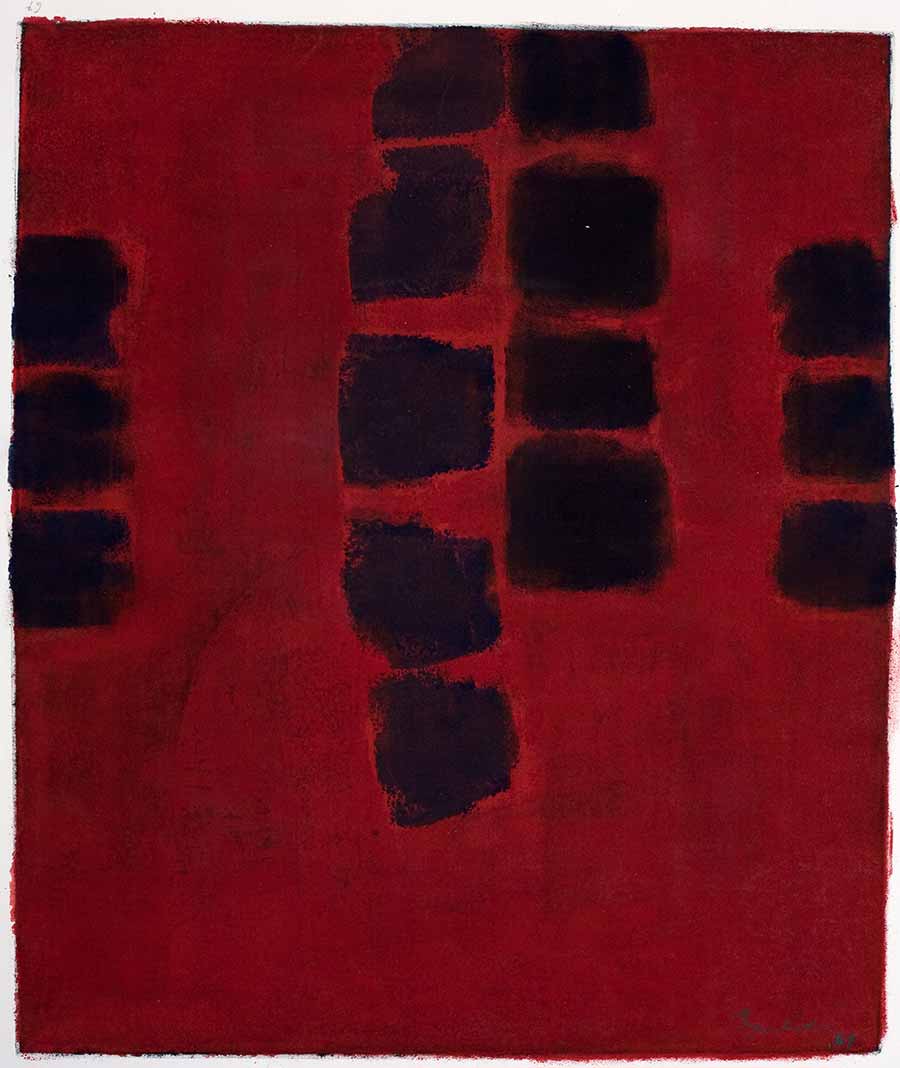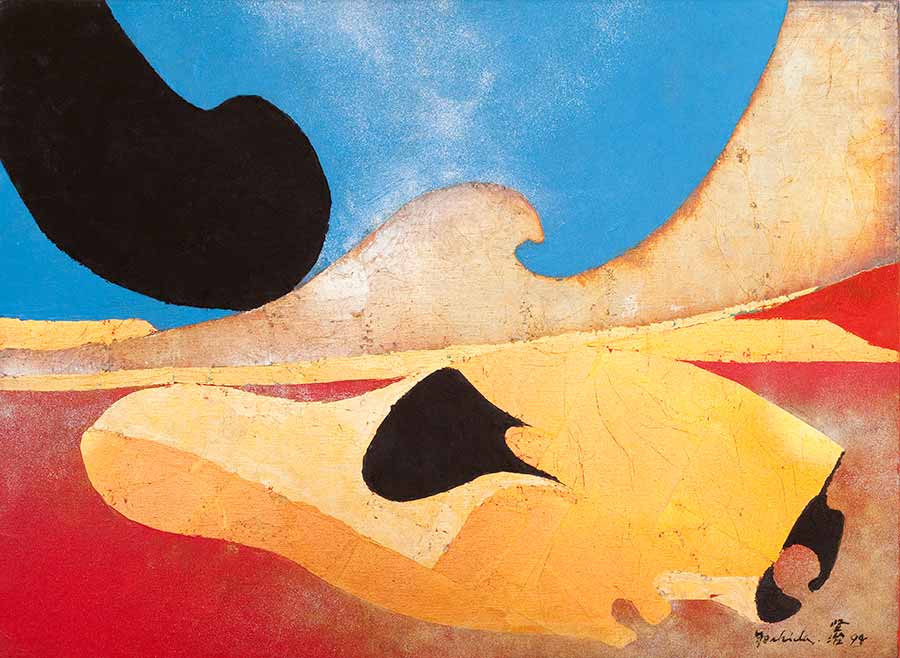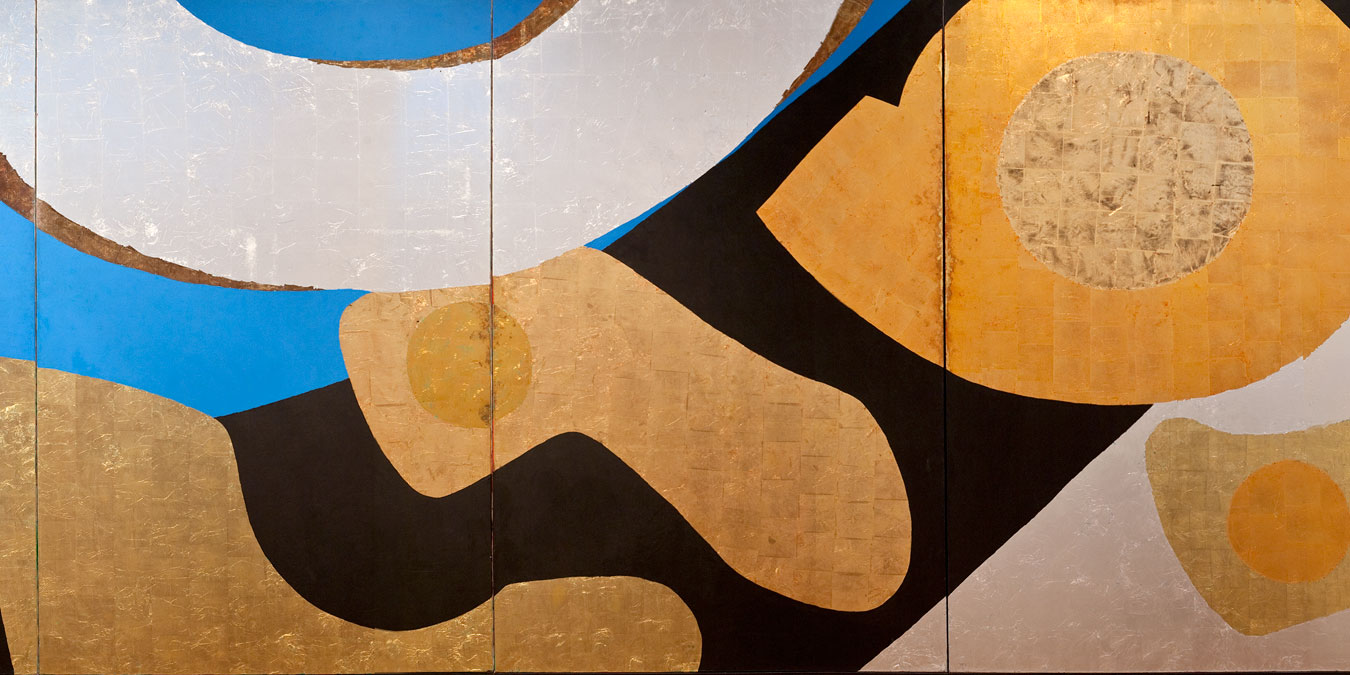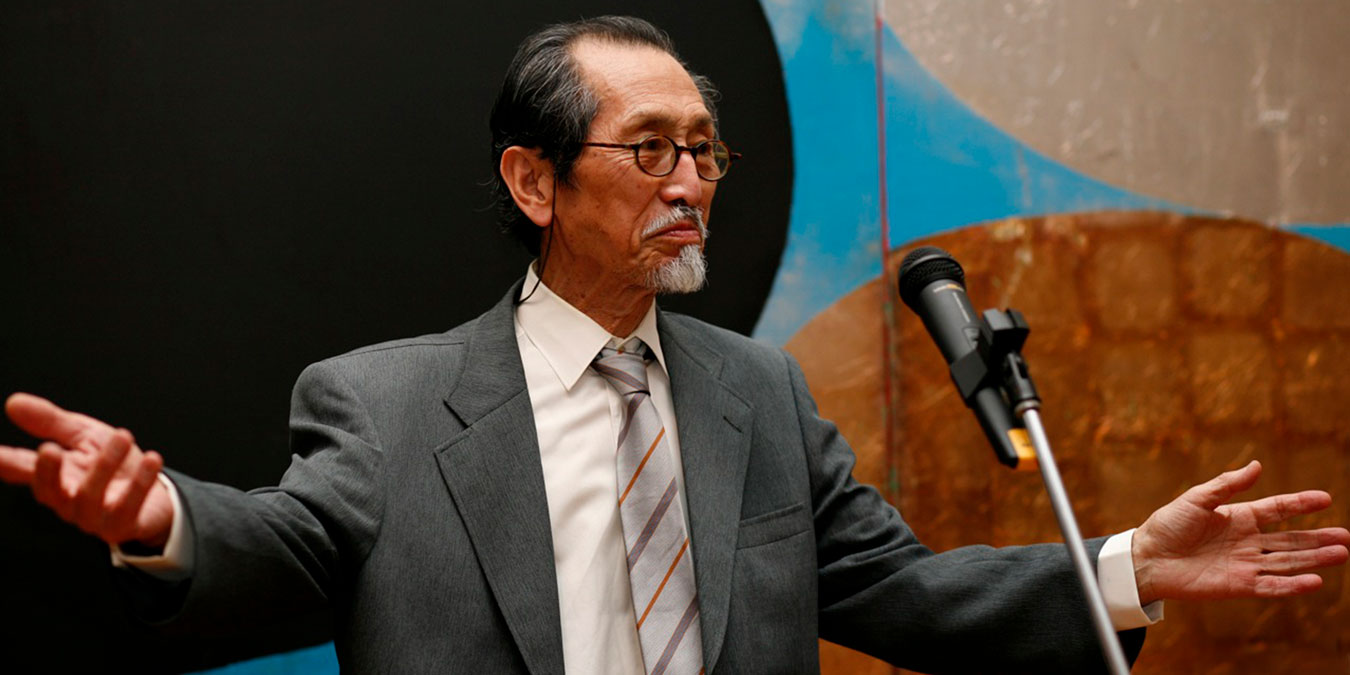KENJI YOSHIDA: Supreme Beauty

Oil on paper, 65 x 50 cmm.

Metals and oil on canvas, 53 x 74 cm.
October Gallery is pleased to announce an exhibition by the late Kenji Yoshida (1924-2009). In 2007, Yoshida said ‘Life brightens most when peace occurs. Peace is supreme beauty’ and this constantly repeated idea suffuses his art. This exhibition will display selected works from different periods of the artist’s career. His first years after moving to Paris in 1964 to work with Stanley Hayter are best characterized by his subtle and graceful etchings, varying from elementary shapes to delicate and intricate motifs against dark backgrounds. In the oil on paper works from the ‘70s and ‘80s, Yoshida experimented with irregular forms and muted colours merging imperceptibly into one another. However, this exhibition will focus primarily on Yoshida’s later paintings in which gold and silver are dynamically applied upon contrasting fields of bright colours and black grounds. Stunning multi-panelled pieces remember, in their sheer size, traditional Japanese lacquer screens and their exquisite deployment of gold and silver leaf. Yoshida’s work reflects the Japanese aesthetic ideals of wabi and sabi, a mindful approach to everyday life, which accepts that beauty is transient, imperfect and always incomplete. Yoshida’s abstract compositions of interacting and complementary elements can be seen as formal explorations reminiscent either of earthly landscapes or of cosmic spheres. His canvasses quietly overwhelm the viewer in their profound contemplation of a serene beauty that celebrates nothing less than Sei-mei, the intense power of Life, itself.
As a young man growing up in Osaka, Yoshida first trained as an artist under the direction of Furukido Masaru Sensei, to whom he often later referred as his great mentor. Yoshida was only thirteen when war broke out in 1937, beginning with the Imperial Army’s invasion of China. The following year saw further expansion of hostilities with Japanese invasions of Russia and Mongolia. The country of Yoshida’s birth would continue on an evermore-frenetic war footing until the ultimate admission of defeat, in 1945.
Given his age there was never any doubt that Yoshida would be sucked into conflict, and he was trained as a pilot of the Japanese Naval Air Force. By the time he graduated, in 1945, the end of the war was already looming, and the decision was made to launch the remaining planes in ‘kami-kaze’ attacks against the onrushing might of the American Pacific fleet. The experience of watching flights of his young companions take-off, never to return, whilst awaiting the orders that would inevitably seal his own fate, permanently marked Yoshida in ways that we can barely imagine today.
Records of the final letters left by other pilots leave us in no doubt as to the unbearable strains under which they all suffered. Yoshida was spared only by the sudden capitulation of the Japanese High Command following the shock of the atomic bombing of Hiroshima and Nagasaki – at which point, still only twenty-one years old, Yoshida knew he was living a charmed life, and had a serious duty to remember those many others who had not been so fortunate.
Recalling the specific admonition of the pacifist Furukido not to take up arms but to pursue painting instead, Yoshida threw himself back into his art with the passion of a man who knew how truly fortunate he was still to be able to paint. In 1964, when he left Japan to live in Paris, he took conscious aim at the grandest subject of all, a systematic approach to describing the complexities of the life-force that invigorates everything, and for many years the majority of his canvases have carried that single, most telling of all titles, whether in French, Japanese or English: La Vie, Sei-Mei, Inochi - quite simply – ‘Life’ or ‘Life-Force’. The power of his art returns insistently to the fundamentals of life, but his yearning for peace is also transmitted in the magnificent, elliptical language of forms and colours that he developed in the hope of revealing the essential unity of humanity to itself.
In 1993, the quality of Yoshida’s work was recognised when he was honoured as the first living artist ever to be given a solo exhibition at the Japanese Galleries of the British
Museum. During the Festival of Canterbury, 2003, his magnificent octagonal installation, Sei-Mei was installed at Canterbury Cathedral. In 2006 the Château de Blois, in the Loire Valley held a major retrospective solo exhibition. His final exhibition, in 2008, was in the main exhibition hall of UNESCO in the centre of Paris – his adopted city and home. In 2010, Japan’s National Broadcasting Network (NHK) created a special documentary entitled ‘Sei-Mei’ on Kenji Yoshida’s life, work and unwavering message of peace.










